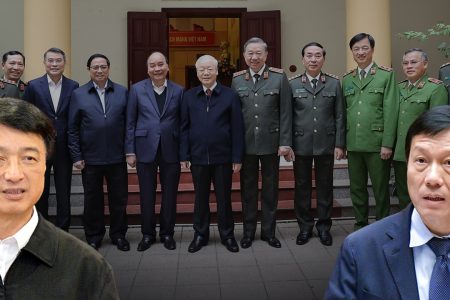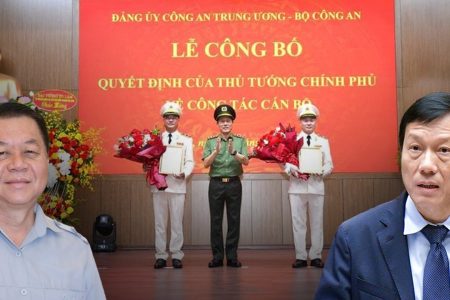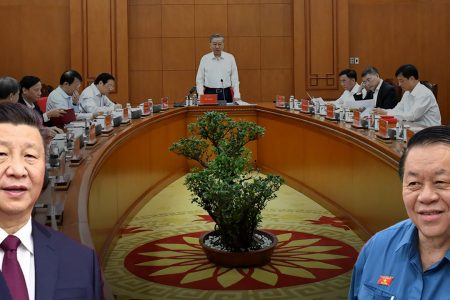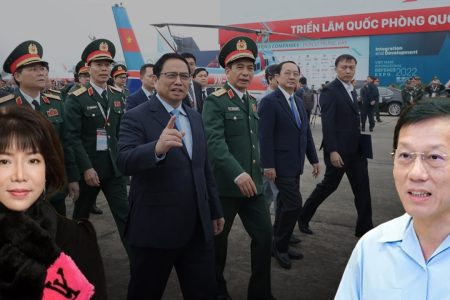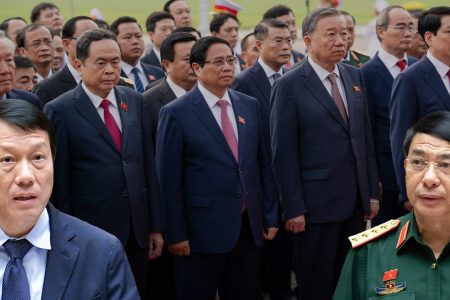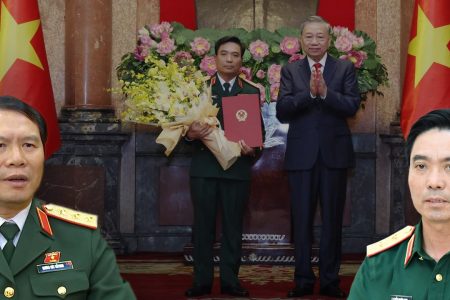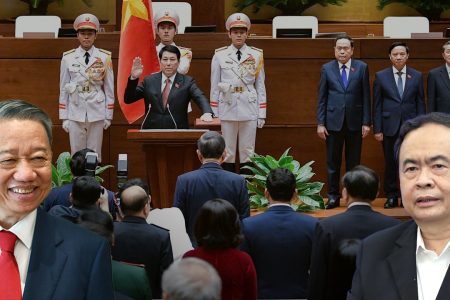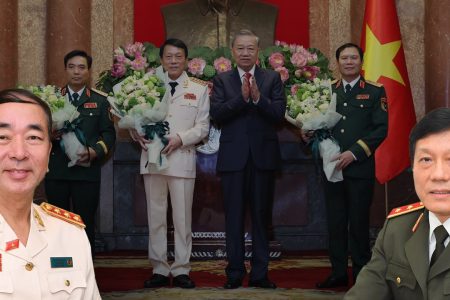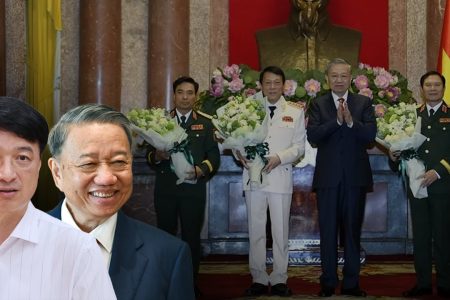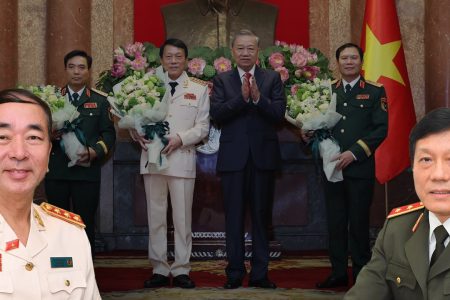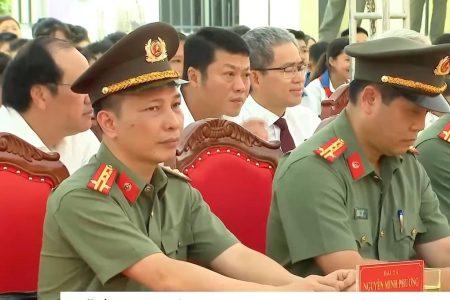Regarding the event “The Vietnamese delegation to the United Nations sent a diplomatic note on March 30, 2020 to the Secretary-General of the United Nations, rejecting China’s claims in the East Sea (South China Sea),” Researcher Truong Nhan Tuan from France commented on this event.
“The first thing is transparent. Vietnam sent a diplomatic note to the UN Secretary General but to which agency? If it was sent to the UN General Assembly, to all UN member states, the problem will be very important,” Mr. Truong Nhan Tuan wrote.

If we remember history, the UN intervention in the South and North Korean wars of 1950-1953 came from a resolution of the UN General Assembly. The problem will be serious if it is sent to the UN Security Council, as the content will be related to global peace. Most of the military interventions of the US and its allies on the battlefield of Afghanistan, Iraq … came from a Resolution of the UN Security Council.
If the note was sent to the International Court of Justice, the UN legal body, we can picture an important issue. Vietnam begins a legal battle with China, with the world’s most prestigious legal body. But the reality is not so! The note mentioned by the press is Vietnam’s March 30, 2020 note to the United Nations Continental Shelf Commission.
The existence of this objection is essentially a “logical” diplomatic order, required by the state, in order to show the attitude of the Vietnamese nation towards the acts and attitudes of one state, or other countries, on an issue related to Vietnam.
“Vietnam opposes China’s claims in the above notes. These claims seriously violate Vietnam’s sovereignty, sovereignty and jurisdiction in the East Sea.”
And the “above notes” here are the two Chinese notes, the first is the December 12, 2019 note that responds to Malaysia’s same-day submission to the Continental Shelf Commission.” The second is the March 23, 2020 note of the Permanent Mission of China to the United Nations to the Secretary General of the United Nations.”
“Vietnam opposes specific Chinese claims with 5 main points:
- 1 / Firstly, sovereignty of the Xisha Islands (Vietnam’s Hoàng Sa or Paracels) and Nam Sa Islands (Vietnam’s Truong Sa or Spratlys).
- 2 / Secondly, the territorial waters of floating structures in the two archipelagos must be defined in accordance with Article 121, Paragraph 3 of the United Nations Convention on the Law of the Sea 1982 (UNCLOS 1982).
- 3 / Third, Island groups in the East Sea, including the Truong Sa and the Hoang Sa, do not have a baseline drawn by connecting the outermost points of the furthest structures.
- 4/4, The floating reefs are not the object of acquiring territory and no private waters.
- 5 / Fifth, Vietnam objected to claims in the East Sea beyond the limits prescribed in the Convention, including the historic right; These claims are not legally valid.
Such objections are necessary. Because, before international law, a nation’s “silence” on an issue that requires it to speak out is considered “implied consent.”
If we track the incident, we see that on December 12, 2019, Malaysia submitted its “Northern Continental Shelf” dossier to the UN Continental Continental Shelf Commission. On the same day, China submitted a note to criticize this claim of Malaysia.”
China asserted its sovereignty over Spratlys and said that Malaysia’s claim had overlapped with its “historic sea.”

“On March 6, the Philippines sent a note to the United Nations Continental Shelf Commission to confirm its sovereignty over the “Kalayaan” island group or the Vietnamese Truong Sa.
China cannot be silent (because silence is consensus). Therefore, China spoke out against the Philippines’ claim, and affirmed its sovereignty over the Spratlys and Paracels, and Scarbourough. China also affirmed the archipelagic baseline around the Spratly Islands, the baseline around the Paracel Islands and the “surrounding sea” area. Of course this “entices” according to Vietnam. Vietnam also cannot be silent because Vietnam’s silence means “denying sovereignty” in the Paracels and Spratly Islands while simultaneously acknowledging China’s maritime claims.
Many cases of the International Court of Justice show that the “distraction” of the government over an issue forces the nation to speak up, for example silence before another state’s claim of sovereignty over a territory earth. The silence of the government of a country can make it lose sovereignty in that territory.”
That is, Vietnam’s criticism to the international community (hereinafter the UN Continental Shelf Committee) on territorial sovereignty and territorial waters is a diplomatic “logical order” and “very normal.”
“It is unfortunate that over the past time when Vietnam has played a rotating role in UN Security Council, Vietnam has not taken advantage of anything in this position at all.
In my opinion, Vietnam has missed many good occasions to sue China before an international court. Last year’s Vanguard Bank incident was an example. The problem is what Vietnam has to sue? Where to sue? Many times I have said this.
It is worth noting in Vietnam’s note that Vietnam implicitly acknowledged the validity of “PCA ruling 2016” The Philippines sued China for “interpretation and application of the Law of the Sea” in the Spratly Islands area.
This is reflected in Vietnam’s position on the validity of all islands, reefs, etc., or the drawing of a baseline around the Paracels and Spratlys. It is in exactly the same way as “the interpretation and application of the Law of the Sea,” especially in Article 121 regarding the validity of islands as well as the Court’s interpretation of the baselines and archipelagic waters.
China uses a variety of facilities, including geological research ships, to enter disputed areas in the East Sea and the region.”
This means that Vietnam has considered the international arbitration tribunal’s ruling on the East Sea PCA 2016 as a “law.”
“What is new, worth mentioning in the note of Vietnam is to put the islands of the Paracel Islands into the Spratly Islands. This has nothing to do with the countries of Malaysia or the Philippines.
The significance of this is that, from now on, Vietnam’s viewpoint is that the islands, large and small, submerged … of Hoang Sa have no maritime effect, and Hoang Sa also has no baselines and regions, according to the calculation of China’s “island nation.”
Thus, the “intention” of Vietnam through this note is to “warm up” the Hoang Sa dispute.
Vietnam’s diplomatic note on March 30 wrote: “Vietnam’s Permanent Mission requests the Secretary-General of the United Nations to circulate this Note to all states parties to the Convention, as well as to all members of the United Nations.”
It is clear that Vietnam’s intention, through the Malaysian continental shelf record, wants to “internationalize” the Paracels issue.
Through this note Vietnam will not sue China on disputes with China in the private beach or Spratly area, with the way that the Philippines did.”
Mr. Truong Nhan Tuan stated: “Many times I have an opinion, suing China by this way is not ‘superior policy’ because we know for sure that China will not recognize the jurisdiction of the Court, nor will it recognize judgments and will not comply with the verdict.”
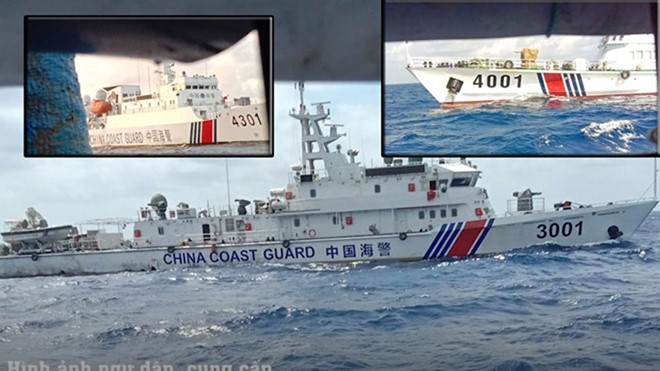
“As happened in the PCA ruling in July 2016, while Vietnam has other ways, not through the legal process, to eliminate China’s irrational claims (in the Spratly region).
My prediction, perhaps Vietnam is using the method that I have suggested. That is the use of the Law of the Sea, as shown in the July 2016 PCA Judgment, through the decision of the Continental Shelf Boundary Commission. Vietnam, Malaysia and the Philippines have this agency recognizing their legitimate records of their nation’s extended continental shelf boundaries.
This may be happening. Vietnam may be cooperating with the Philippines and Malaysia, through its continental shelf records, from December 2019.
If this succeeds, China’s irrational claims, such as “waters approaching islands“, “historic waters” represented by the nine-dashed U-shaped map, south of the South China Sea, will be invalidated by the UN decision.
Regarding the territorial waters in the Hoang Sa area, Vietnam Vietnam will have to use the Philippine model to sue China.”
Researcher Truong Nhan Tuan concluded.
China is a big country in the world, having a border with thousands of kilometers with Vietnam. Despite having the same ideology of Communism like Vietnam, China stills increases its hegemony in the East Sea.
After Vietnam sent a note on March 30, 2020 to the United Nations to reject China’s claims in the East Sea, Beijing immediately sent coast guard vessels and attacked Vietnam’s fishing boats when they are fishing on their territorial waters. The assault is a dangerous blow, slapping in the face of Vietnam’s communist regime.
If the Communist Party of Vietnam continues to be silent when witnessing the loss and suffering of the people against China’s violations, then General Nguyen Phu Trong and the Party do not need to exist anymore but return the power to the nation with over 90 million people in Vietnam.
Thu Thuy from Hochiminh city – Thoibao.de (Translated)




